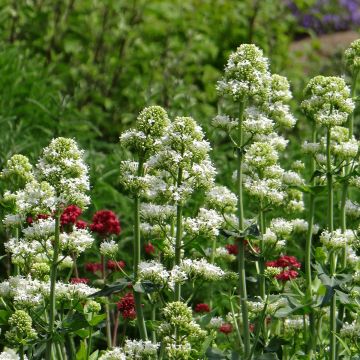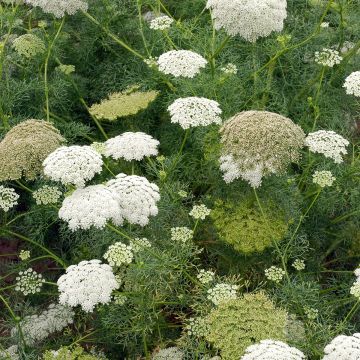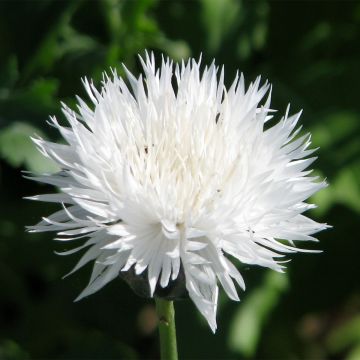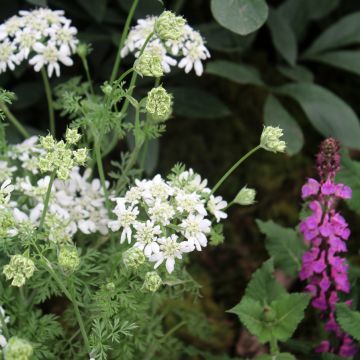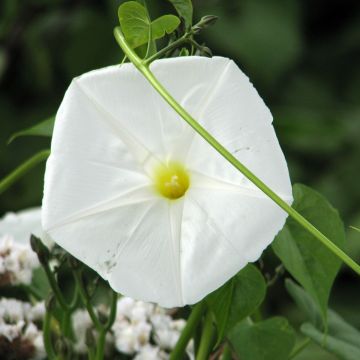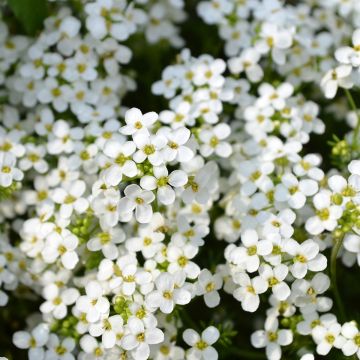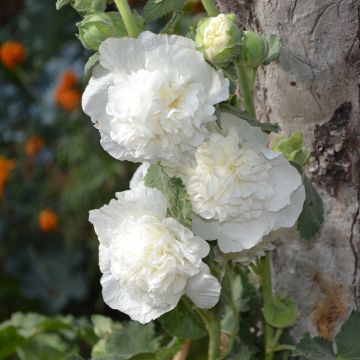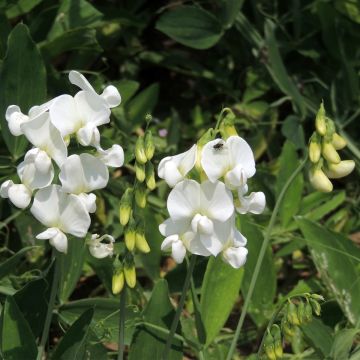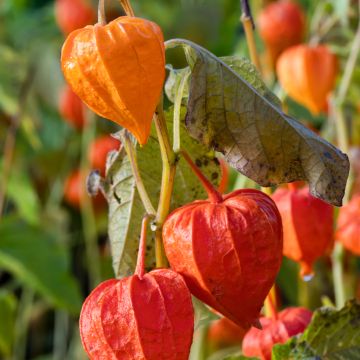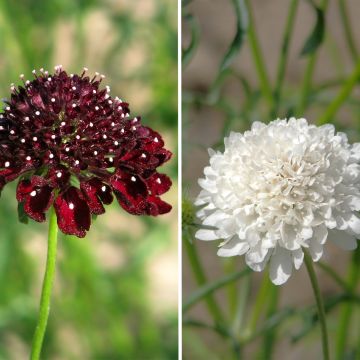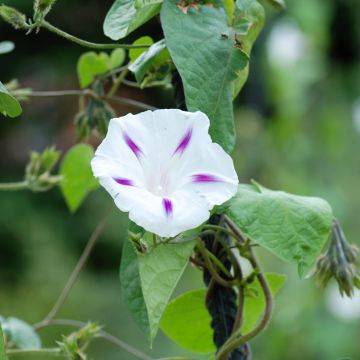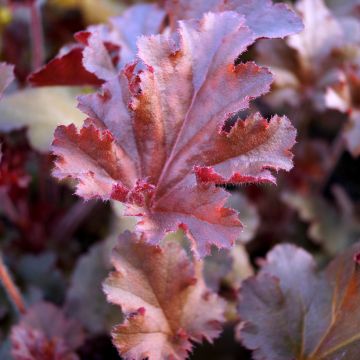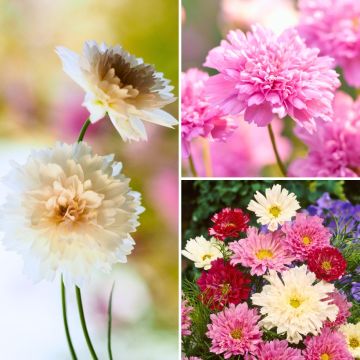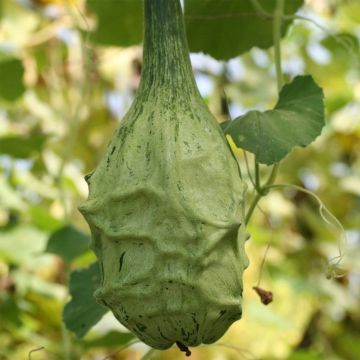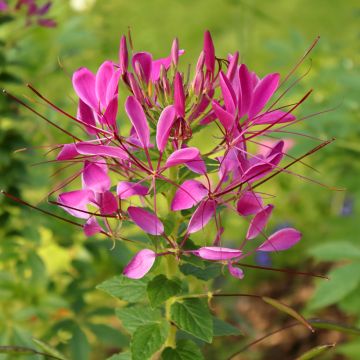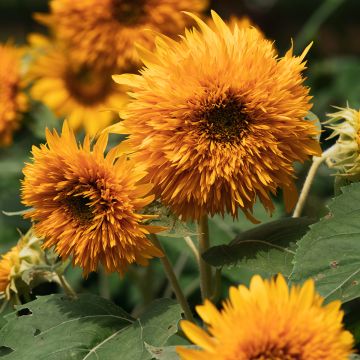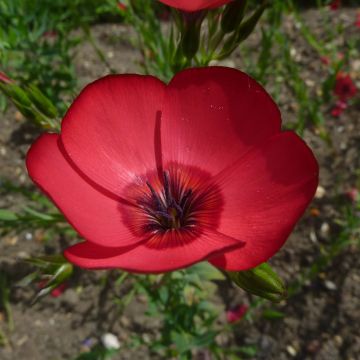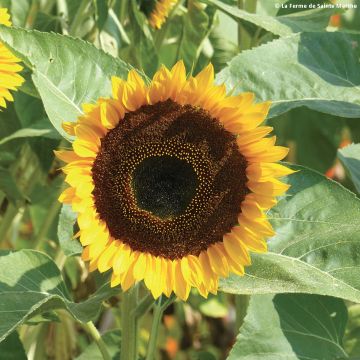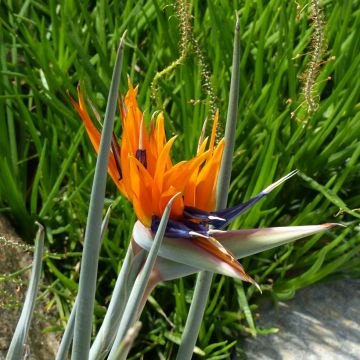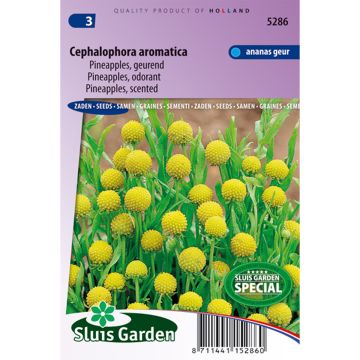Shipping country and language
Your country of residence may be:
Your country of residence is:
For a better user experience on our website, you can select:
Your shipping country:
Andorra
Austria
Belgium
Bulgaria
Canada
Chile
Croatia
Cyprus
Czechia
Denmark
Estonia
Finland
France
Germany
Greece
Hungary
Iceland
Ireland
Italy
Latvia
Lithuania
Luxembourg
Malta
Monaco
Netherlands
Poland
Portugal
Romania
Slovakia
Slovenia
Spain
Sweden
Switzerland
United Kingdom
We only deliver seed and bulb products to your country. If you add other products to your basket, they cannot be shipped.
Language:
French
German
Spanish
English
My Account
Hello
My wish lists
Plantfit
Log in / Register
Existing customer?
New customer?
Create an account to track your orders, access our customer service and, if you wish, make the most of our upcoming offers.
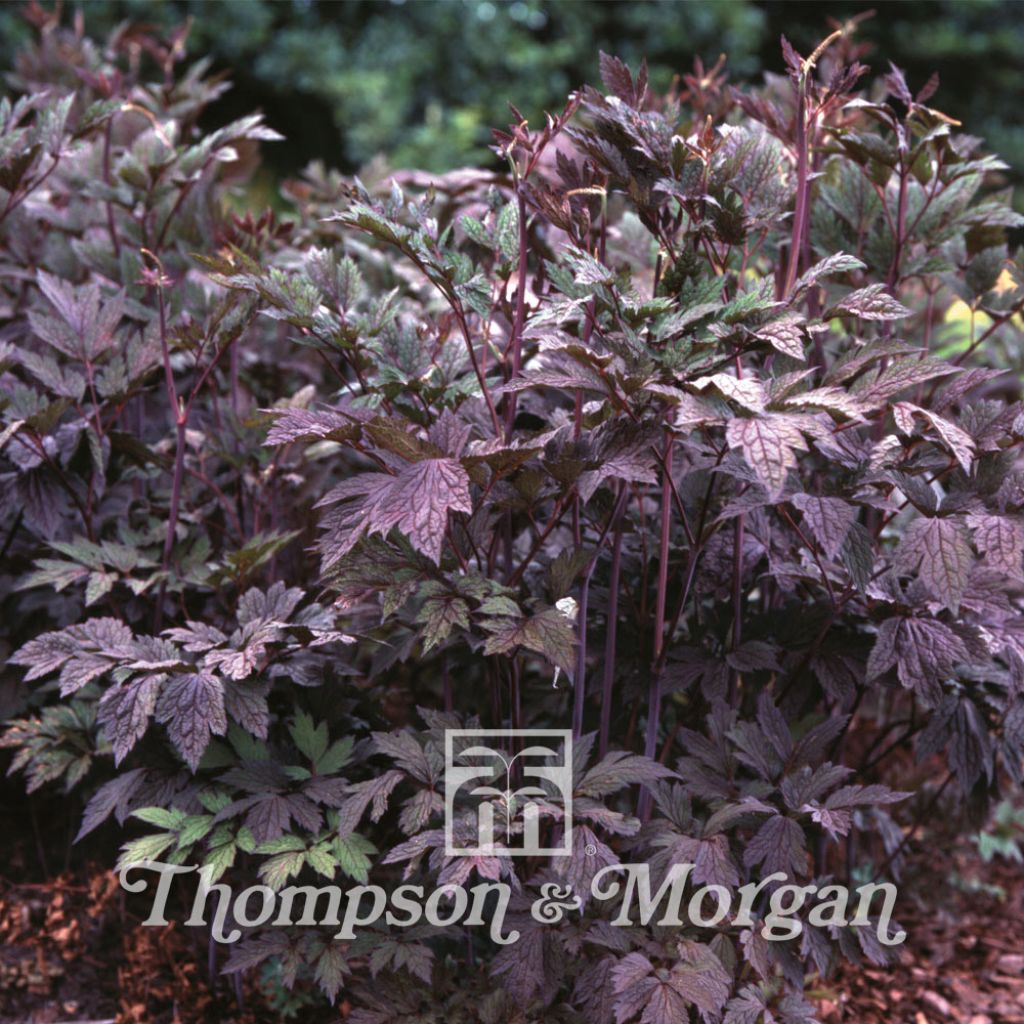

Cimicifuga racemosa Atropurpurea - Bugbane
Cimicifuga racemosa Atropurpurea - Bugbane
Cicimifuga racemosa Atropurpurea
Baneberry Atropurpurea Group, Bugbane, Black cohosh
Why not try an alternative variety in stock?
View all →Order in the next for dispatch today!
Dispatch by letter from €3.90.
Delivery charge from €5.90 Oversize package delivery charge from €6.90.
More information
This item is not available in your country.
Schedule delivery date,
and select date in basket
This plant carries a 6 months recovery warranty
More information
We guarantee the quality of our plants for a full growing cycle, and will replace at our expense any plant that fails to recover under normal climatic and planting conditions.
Seed-only orders are dispatched by sealed envelope. The delivery charge for seed-only orders is €3.90.
Does this plant fit my garden?
Set up your Plantfit profile →
Description
Cimicifuga racemosa 'Atropurpurea', also known as Actaea simplex Atropurpurea Group, is a beautiful perennial with lush purple fern-like foliage that is so dark it appears almost black. It truly shines in late summer when it adorns itself with large, fragrant inflorescences that resemble silver candles. Vigorous, hardy, and tolerant of summer drought, this medicinal plant haunts the clear understory of woodlands, revealing many secrets. This majestic plant slowly establishes itself, forming bushy clumps with a striking appearance, making it a valuable addition to the back of a border.
Cimicifuga racemosa belongs to the Ranunculaceae family. It is native to forests in the eastern and central regions of North America. It boasts many medicinal properties, which have been utilised for a long time. 'Atropurpurea' is the dark purple form of this majestic perennial. Growing from a knotty rhizome with fibrous roots arranged in compact masses, this plant slowly forms bushy clumps reaching a height of 1.5m (5ft) when flowering, with a minimum spread of 60cm (24in). Its stems are covered with large, compound leaves that are finely cut and as elegant as fern fronds, sometimes reaching a length of 40cm (16in). They have a very dark purple colour that appears black in shade and against the light. The flowering occurs in late summer, with large terminal inflorescences in cream-white or pinkish spikes that are either erect or arching. They consist of small, highly fragrant flowers. This flowering is highly attractive to bees and butterflies, but not everyone appreciates its scent.
It thrives in partial shade, in the dappled light of a clear understory or at the edge of a forest. This species tolerates summer drought and root competition quite well. Its striking silhouette and bright flowers will create a beautiful backdrop for perennials that have finished blooming in late summer. Its dark foliage pairs well with the pink and blue stars of asters. This magnificent plant will also make a striking focal point when planted in a large pot on a patio.
Cimicifuga racemosa was used by Native American peoples to facilitate childbirth and combat menstrual disorders. Recent research has shown that it contains a substance with estrogenic effects. It is currently included in various herbal preparations used to alleviate menopausal symptoms, among other uses.
Flowering
Foliage
Plant habit
Botanical data
Cicimifuga
racemosa
Atropurpurea
Ranunculaceae
Baneberry Atropurpurea Group, Bugbane, Black cohosh
North America
Other Thompson and Morgan seeds
Planting and care
Sowing
Actaea seeds may need to be pre-chilled for 3 months. Sow from mid-January to mid-March on the surface of moist compost, in pots or trays. Cover with a light sprinkling of compost or vermiculite. Enclose the sowings in a polythene bag and maintain at around 21°C (69.8°F) for 3 months. Then place the containers and bag in a refrigerator (not freezer) for a period of 3 months. After that, return to 21°C (69.8°F). Germination may be slow. Check the pots regularly and carefully. As the seedlings emerge and become large enough to handle, transplant them into 7.5cm (3in) diameter pots or trays.
If germination has not occurred during this period, repeat the cycle as described above.
Gradually acclimatise young plants to cooler conditions for a few weeks before planting out when all risk of frost has passed, spacing them 60cm (24in) apart. Choose a semi-shaded position in moist, clayey soil.
Cultivation
These plants add a lot of personality to the garden in late summer, and look wonderful at the back of borders or in light woodland. They appreciate partial shade and rich, deep soil. Keep an eye on watering, especially for young plants. They generally do not need staking and require no further maintenance.
Sowing period
Intended location
This item has not been reviewed yet - be the first to leave a review about it.
Flower seeds
Haven't found what you were looking for?
Hardiness is the lowest winter temperature a plant can endure without suffering serious damage or even dying. However, hardiness is affected by location (a sheltered area, such as a patio), protection (winter cover) and soil type (hardiness is improved by well-drained soil).

Photo Sharing Terms & Conditions
In order to encourage gardeners to interact and share their experiences, Promesse de fleurs offers various media enabling content to be uploaded onto its Site - in particular via the ‘Photo sharing’ module.
The User agrees to refrain from:
- Posting any content that is illegal, prejudicial, insulting, racist, inciteful to hatred, revisionist, contrary to public decency, that infringes on privacy or on the privacy rights of third parties, in particular the publicity rights of persons and goods, intellectual property rights, or the right to privacy.
- Submitting content on behalf of a third party;
- Impersonate the identity of a third party and/or publish any personal information about a third party;
In general, the User undertakes to refrain from any unethical behaviour.
All Content (in particular text, comments, files, images, photos, videos, creative works, etc.), which may be subject to property or intellectual property rights, image or other private rights, shall remain the property of the User, subject to the limited rights granted by the terms of the licence granted by Promesse de fleurs as stated below. Users are at liberty to publish or not to publish such Content on the Site, notably via the ‘Photo Sharing’ facility, and accept that this Content shall be made public and freely accessible, notably on the Internet.
Users further acknowledge, undertake to have ,and guarantee that they hold all necessary rights and permissions to publish such material on the Site, in particular with regard to the legislation in force pertaining to any privacy, property, intellectual property, image, or contractual rights, or rights of any other nature. By publishing such Content on the Site, Users acknowledge accepting full liability as publishers of the Content within the meaning of the law, and grant Promesse de fleurs, free of charge, an inclusive, worldwide licence for the said Content for the entire duration of its publication, including all reproduction, representation, up/downloading, displaying, performing, transmission, and storage rights.
Users also grant permission for their name to be linked to the Content and accept that this link may not always be made available.
By engaging in posting material, Users consent to their Content becoming automatically accessible on the Internet, in particular on other sites and/or blogs and/or web pages of the Promesse de fleurs site, including in particular social pages and the Promesse de fleurs catalogue.
Users may secure the removal of entrusted content free of charge by issuing a simple request via our contact form.
The flowering period indicated on our website applies to countries and regions located in USDA zone 8 (France, the United Kingdom, Ireland, the Netherlands, etc.)
It will vary according to where you live:
- In zones 9 to 10 (Italy, Spain, Greece, etc.), flowering will occur about 2 to 4 weeks earlier.
- In zones 6 to 7 (Germany, Poland, Slovenia, and lower mountainous regions), flowering will be delayed by 2 to 3 weeks.
- In zone 5 (Central Europe, Scandinavia), blooming will be delayed by 3 to 5 weeks.
In temperate climates, pruning of spring-flowering shrubs (forsythia, spireas, etc.) should be done just after flowering.
Pruning of summer-flowering shrubs (Indian Lilac, Perovskia, etc.) can be done in winter or spring.
In cold regions as well as with frost-sensitive plants, avoid pruning too early when severe frosts may still occur.
The planting period indicated on our website applies to countries and regions located in USDA zone 8 (France, United Kingdom, Ireland, Netherlands).
It will vary according to where you live:
- In Mediterranean zones (Marseille, Madrid, Milan, etc.), autumn and winter are the best planting periods.
- In continental zones (Strasbourg, Munich, Vienna, etc.), delay planting by 2 to 3 weeks in spring and bring it forward by 2 to 4 weeks in autumn.
- In mountainous regions (the Alps, Pyrenees, Carpathians, etc.), it is best to plant in late spring (May-June) or late summer (August-September).
The harvesting period indicated on our website applies to countries and regions in USDA zone 8 (France, England, Ireland, the Netherlands).
In colder areas (Scandinavia, Poland, Austria...) fruit and vegetable harvests are likely to be delayed by 3-4 weeks.
In warmer areas (Italy, Spain, Greece, etc.), harvesting will probably take place earlier, depending on weather conditions.
The sowing periods indicated on our website apply to countries and regions within USDA Zone 8 (France, UK, Ireland, Netherlands).
In colder areas (Scandinavia, Poland, Austria...), delay any outdoor sowing by 3-4 weeks, or sow under glass.
In warmer climes (Italy, Spain, Greece, etc.), bring outdoor sowing forward by a few weeks.
